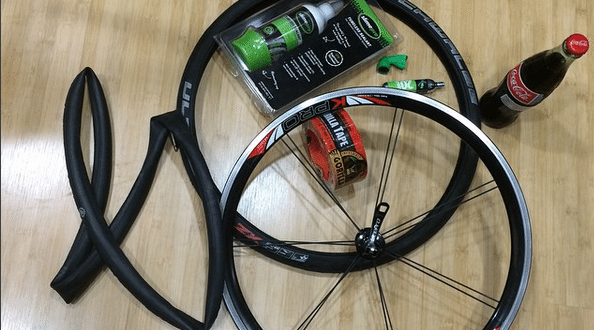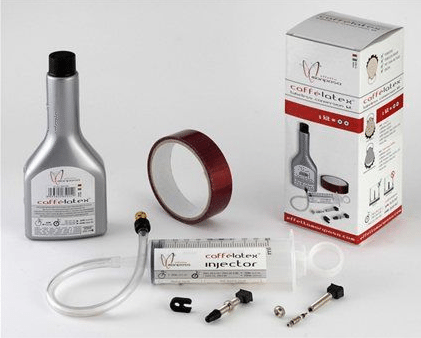Tubeless Sealant
Tubeless sealant
As compared to the traditional pneumatic tires, the tubeless tires carry a continuous rib that is molded innately into the bead of the tire. The air pressure inside the tire forces it to seal with the flanges of the metal rim of the wheel. What you see in the tubeless bicycle tire system is a compatible tire and an airtight plus the tire bead seat and spoke holes. The airtight rim should be capable of being sealed at the valve stem. As there is no tube to pinch between the rim and an obstacle, the tubeless tires remove the risk of pinch flats and can offer better traction even with low air pressure.
Switching to tubeless
The current tubeless tires available in the market are thicker and heavier and make use of tubeless sealant inside the tires. These are an excellent choice for rough pavement and gravel roads. The lower pressure in these tires boosts traction when cornering and braking as those tires stick to the ground better. Switching to tubeless offer one several advantage as compared to tubular. All one needs to be is a little more vigilant once everything is together. You enjoy a smooth ride and good traction because of the ability to run lower pressure. What can make those tubeless gain higher popularity is a more varied lineup of wheels and tires. The lighter aerodynamic wheels with more efficient casings can make a tubeless tire work more efficiently.
Types of Tubeless sealants
There are two basic categories of sealants; one is the synthetic liquid rubber and the other is a suspension of flakes in a liquid. The rotation in the tire and the escaping air add to the advantage of the sealant and helps them to prevent air leaks. The synthetic liquid rubber sealant solidifies as compressed air passes over it. In the other type, the fibers wrap around the chips, thus forming a plug. One should be careful as there are some sealants that contain ammonia or other chemicals that can damage rims over time. A sealant could be completely water-based and need not have the glycol. However, depending on the temperatures, it can tend to separate and freeze and dry out quickly while riding.
Inserting Tubeless sealants
Sealants can be injected easily into a tubeless tire when mounting it. It is best to remove the valve core in order to avoid any clogging. The synthetic liquid rubber sealants can be inserted through valves with non-removable valve cores. However, the fiber based ones need special techniques. One may need to replace with fresh sealant every two to four months depending on the type of sealant used.
Check Tubeless sealant levels
Keeping an eye on the tubeless sealant is essential for all those who love riding tubeless. A good bit of quality tubeless sealant can make the right a lot smoother. The semi-solidified sealant gets one thinking as to what causes the sealant to dry up as well as how often should it be checked and replaced. Well, generally speaking, a good quality of tubeless sealant application can easily last two to six months, depending on heat and humidity. The sealant evaporates faster in hotter and drier the conditions. Get about one to three months for tubeless set ups depending on where you bike, for how long your bike and what are the levels of temps and humidity. Shake that tire and if you hear the tubeless sealant sloshing around, you are good to go. However, if you do not hear anything, you need to add a couple more ounces. It is recommended to check the sealant every 30 days.
How to remove old Tubeless sealant
Once you have a lot of dried sealant inside the tire, and if it is sealing up the tire’s porosity, it is best to leave it in there. However, you can remove any big pieces of the dried sealant. With time, most tubeless sealants cease to be active and should be removed. The fiber-based sealants can be rinsed out with water while the latex-based ones can be peeled out when solidified.
Rolling resistance and the tubeless sealant
Bikers often want to know as to how the tubeless sealant impacts the Bicycle Rolling Resistance. The good news is that different tests have shown that adding a sealant makes only a minor difference to the rolling resistance that rises only marginally. The small amount of tubeless sealant sticks to the rim and bead and the first 20 ml infect do not add anything to the rolling resistance. Thus, the rise in rolling resistance because of adding tubeless sealant is much lower than expected.
Presta tubeless valve also play an important role in tubeless sealant system, The removable valve core offers easy access whenever you need any additional tubeless sealant. You can tighten the valve core for a secure and firm hold. As the diameter of the valve is larger, there are lesser enhances of the tubeless sealant getting clogged.
Now that you know it is a good idea to go tubeless and with some good sealants out there, keep in mind to go for those without Liquid latex, especially if you have a latex allergy. Make sure to get the stuck properly to the tire. The sealant can get between tube and tire and help in the overall sealing process. Avoid buying Foaming sealants as most of them do not work. The tubeless sealants should be thin to flow quickly and seal the puncture fast.






Spent some time on the Internet and figured out how to mount one of these woithut a compressor. I ended up using some soapy water and a tire tool.
I have the Vittoria CXs on some wheels and the Tufo Elite Plus on one set. Can’t tell the difecrfnee in ride but the Tufos are way more durable. But no flats in any of those – race only wheels.I use Tufos for Cross and that’s where the sealant worked for me.